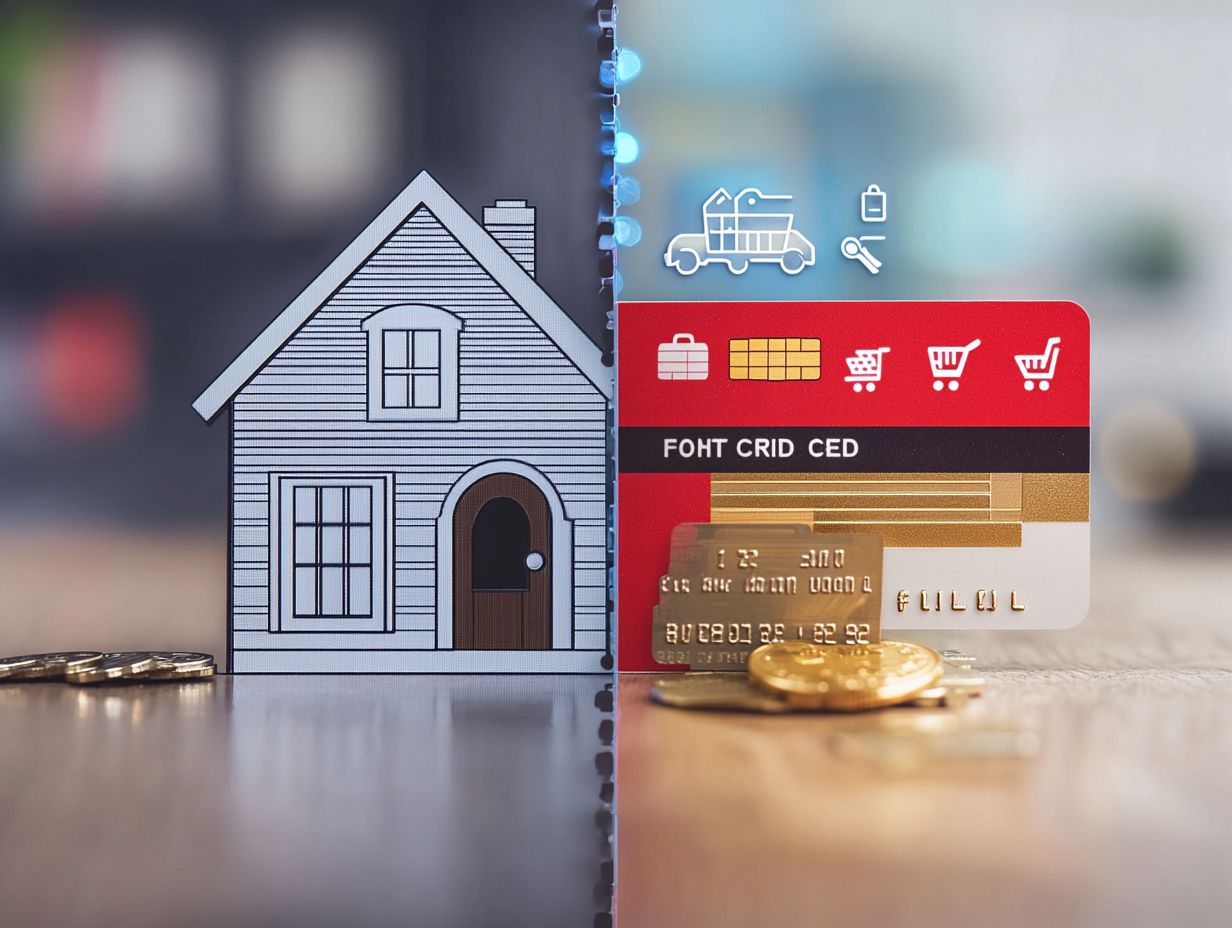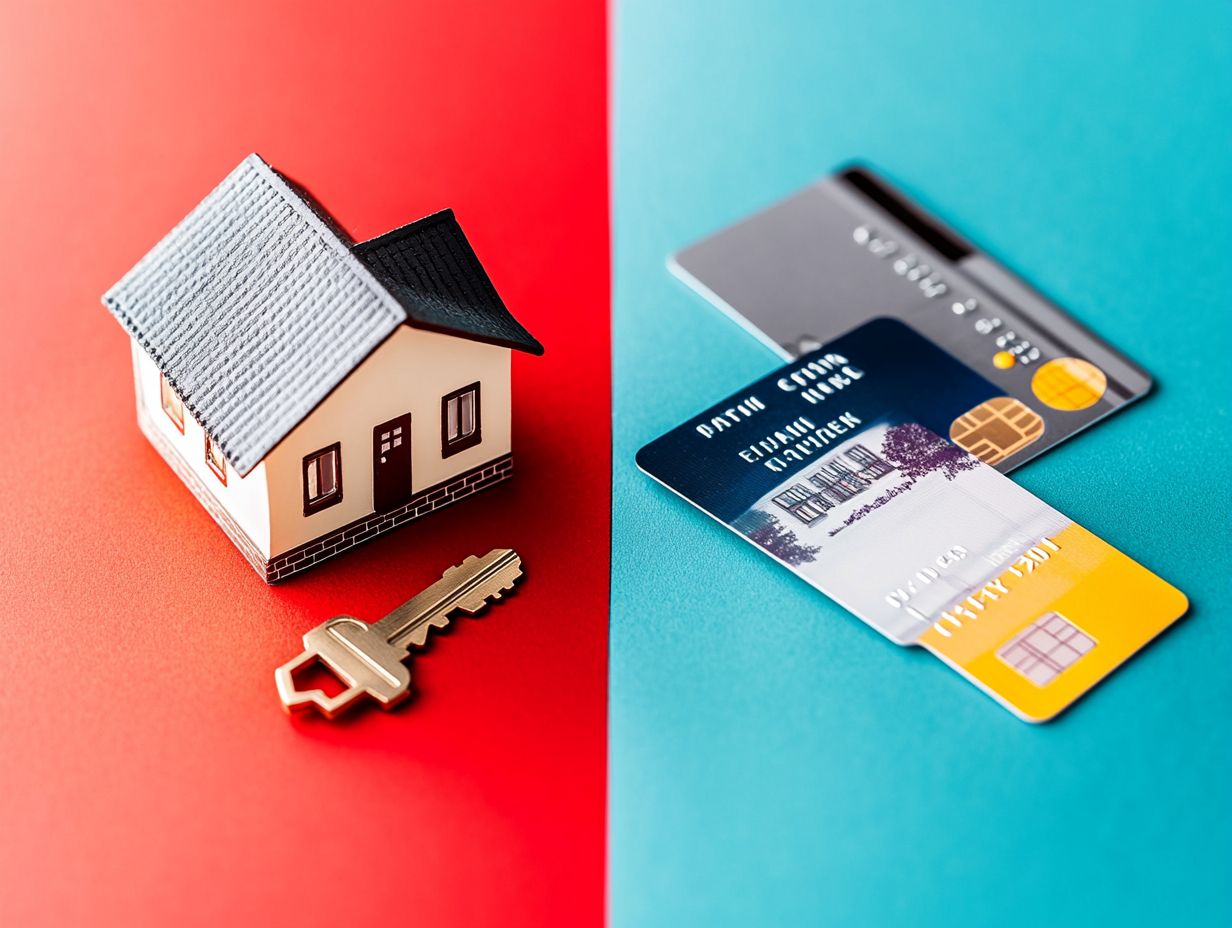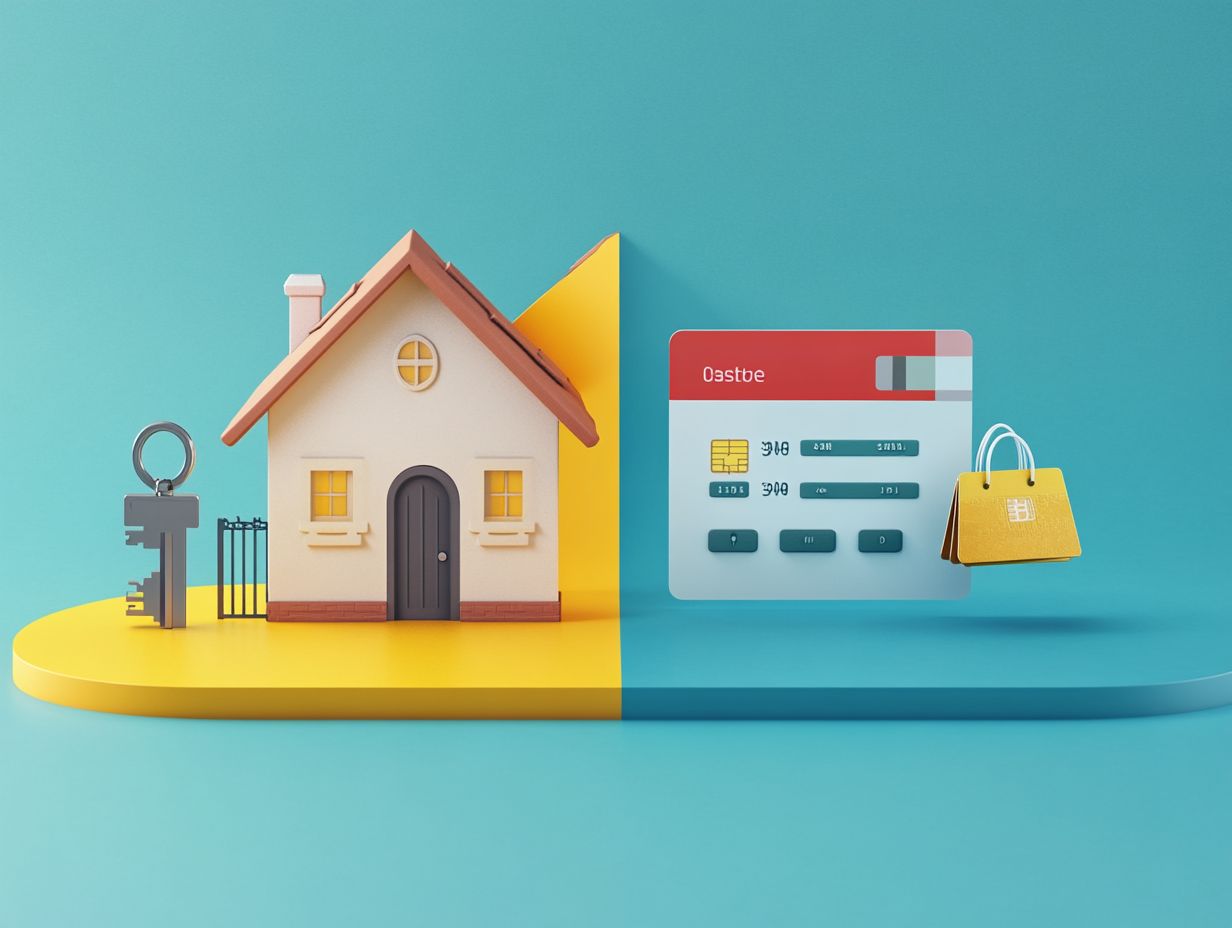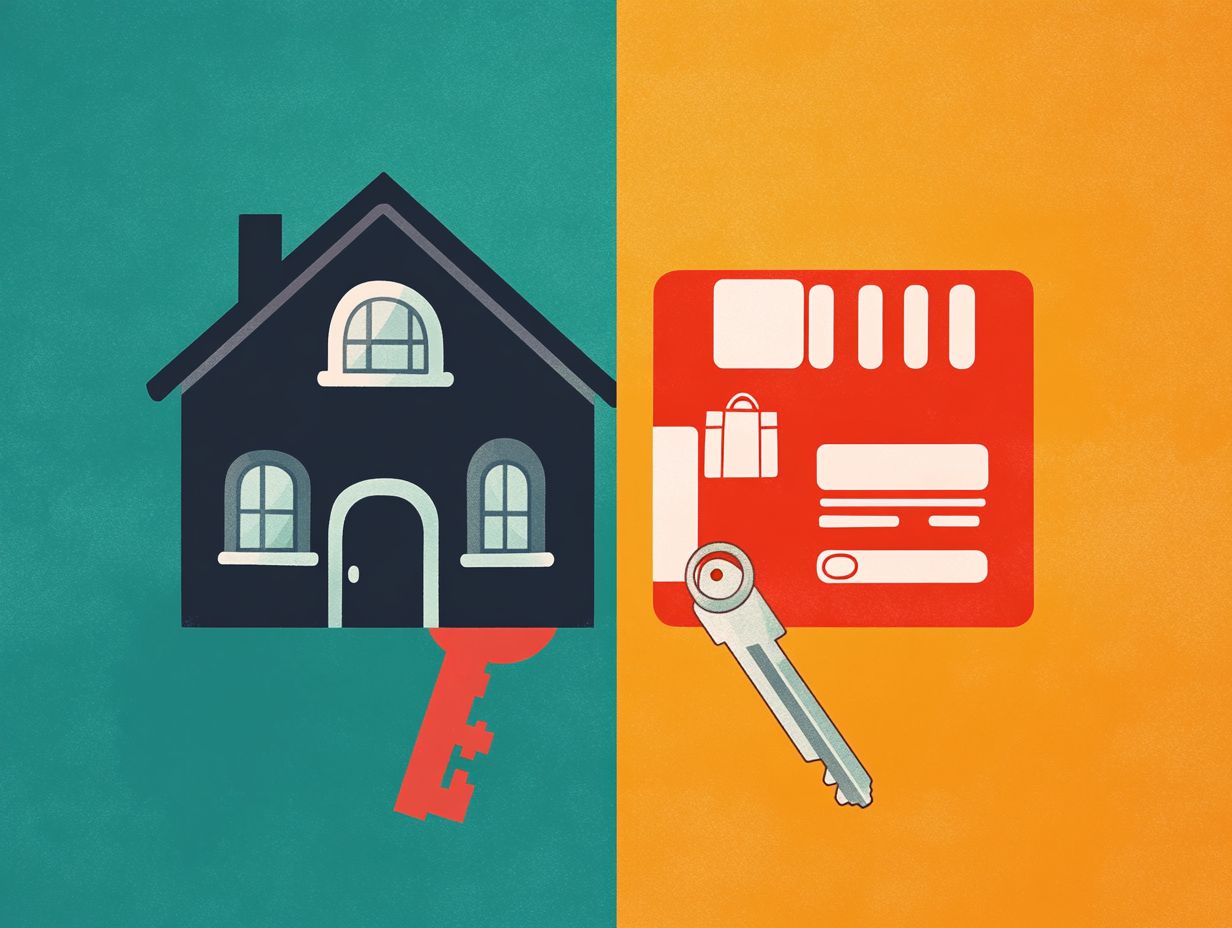How to Choose Between Secured and Unsecured Credit
Understanding the differences between secured and unsecured credit can truly transform your financial journey.
Each type of credit offers its own set of benefits and considerations, affecting interest rates and how much you can borrow. This discussion delves into the unique characteristics of both options, allowing you to weigh the advantages of secured credit like lower rates and higher limits against the flexibility and accessibility of unsecured credit.
By exploring key factors such as your credit score and financial situation, you’ll equip yourself to choose the right credit type for your needs.
Dive in with us to discover how secured and unsecured credit can change your financial future!
Contents
- Key Takeaways:
- Understanding Secured and Unsecured Credit
- Benefits of Secured Credit
- Benefits of Unsecured Credit
- Factors to Consider When Choosing Between Secured and Unsecured Credit
- How to Choose the Right Type of Credit for Your Needs
- Frequently Asked Questions
- How do I know if I should choose secured or unsecured credit?
- What is the main difference between secured and unsecured credit?
- How do I determine the interest rates for secured and unsecured credit?
- Is it easier to get approved for secured or unsecured credit?
- What are the consequences of defaulting on secured and unsecured credit?
- Can I switch from secured to unsecured credit or vice versa?
Key Takeaways:

- Consider your credit score and financial situation before choosing between secured and unsecured credit. This will help you determine which option is better for you.
- Secured credit often comes with lower interest rates and higher limits. This makes it a good option for those looking to borrow larger amounts. Unsecured credit, however, doesn t require an asset you put down to secure the loan and offers more flexibility.
- Assess your needs and goals before deciding on the type of credit to apply for. If you need a large amount of money and are willing to use collateral, secured credit may be the better option. For smaller amounts or more flexibility, unsecured credit may be the way to go.
Understanding Secured and Unsecured Credit
Understanding the nuances between secured and unsecured credit is crucial for making informed financial decisions tailored to your unique needs based on factors like credit history, credit score, and whether you qualify for credit.
A secured credit card typically requires a cash deposit that acts as collateral, influencing both your credit limit (the maximum amount you can borrow on a card) and the application process. On the other hand, an unsecured credit card doesn t require this deposit, but it may carry higher interest rates and annual fees.
By grasping these distinctions, you can confidently navigate your options and make choices that align with your financial goals.
Differences and Similarities
The primary differences between secured and unsecured credit cards revolve around their requirements and the associated risks. Secured cards typically require a cash deposit that serves as collateral, while unsecured cards do not demand such upfront payments.
This cash deposit, usually matching the credit limit, helps minimize the lender’s risk and provides a safety net in case of missed payments. For example, the Discover it Secured Credit Card enables you to start building your credit while keeping your deposit secure, often with a manageable annual fee. On the other hand, the Capital One Platinum Secured Credit Card presents a straightforward pathway to earning an unsecured card with responsible use.
While unsecured credit cards may come with higher interest rates, they offer greater flexibility and often include rewards. It s vital to weigh the pros and cons of each option according to your personal financial goals and habits.
Benefits of Secured Credit
Secured credit cards present a wealth of advantages, positioning themselves as a superior option for anyone aiming to build or enhance their credit profile, particularly in contrast to unsecured credit alternatives.
With these cards, you often enjoy lower interest rates, and as you establish a solid payment history, you may find yourself eligible for higher credit limits. This creates ample opportunities for financial growth and gives you the power to manage your finances effectively.
Lower Interest Rates and Higher Limits

Secured credit cards have significant advantages. They often offer lower interest rates and higher credit limits, especially for those with a positive credit history.
This benefit is particularly appealing if you re looking to build or rebuild your credit score. Unlike unsecured credit cards, which typically come with higher rates due to the increased risk for lenders, secured credit cards usually require a cash deposit that acts as a deposit.
As you use these cards responsibly by making timely payments and keeping your balances low you ll likely see an improvement in your credit score over time.
For example, cards like the Discover it Secured or the Capital One Secured Mastercard not only offer competitive rates but also provide cashback rewards, making them fantastic choices that you won’t want to miss!
By demonstrating responsible usage, you can transition to unsecured credit options in the future, further enhancing your financial freedom.
Benefits of Unsecured Credit
Unsecured credit cards offer a unique blend of flexibility and convenience that many consumers find appealing. Without the need for a deposit, these cards can be used for a wide array of purchases, including those that earn cash back rewards.
This makes them an attractive option for individuals with established credit histories who seek both versatility and value in their financial choices.
No Collateral Required and Flexible Use
One of the standout features of unsecured credit cards is that they don t require any deposit, giving you the freedom to use your credit limit for a variety of expenses without needing to tie up cash.
This lack of a deposit enhances your financial flexibility, allowing you to manage your cash flow more effectively. For instance, you can use these cards for urgent expenses like unexpected car repairs or medical bills, addressing immediate needs without the hassle of locking away funds in a security deposit.
Unsecured credit cards often come with enticing rewards and cash-back options, making responsible spending even more appealing. Cards like the Discover it Cash Back or the Chase Freedom Flex show how everyday purchases can lead to significant benefits, making them a smart choice for managing your finances while maintaining liquidity.
Factors to Consider When Choosing Between Secured and Unsecured Credit
When weighing the options between secured and unsecured credit, it’s essential to consider a range of factors. Your current credit score, financial situation, and overall creditworthiness play pivotal roles in determining which type of credit aligns best with your needs.
Taking these elements into account will ensure that you make an informed decision that serves you well in the long run.
Credit Score and Financial Situation

Your credit score and financial situation are crucial in determining whether a secured or unsecured credit card aligns better with your needs.
By understanding these factors, you can make informed decisions tailored to your unique circumstances. For instance, if your credit score is on the lower end, you might find that secured credit options requiring a cash deposit as collateral are more accessible.
On the other hand, if you boast a robust credit history, unsecured cards might be more appealing, often featuring attractive rewards and lower interest rates.
Common financial situations, such as needing to rebuild credit after a setback or aiming to earn rewards on everyday purchases, will undoubtedly influence your choice.
To get a clear picture of your financial health, it’s wise to regularly review your credit reports, establish a budget, and calculate your debt-to-income ratio, ensuring you have a comprehensive understanding of your financial landscape.
How to Choose the Right Type of Credit for Your Needs
Choosing the right type of credit requires you to carefully assess your individual needs and financial goals.
Both secured and unsecured credit cards present unique advantages tailored to various financial situations and aspirations. By understanding what each option offers, you can make a decision that aligns with your financial journey.
Assessing Your Needs and Goals
To assess your needs and goals when choosing between secured and unsecured credit, understand your spending habits and credit history.
Think about your long-term money goals. By tracking your expenses each month, you can discover insights into your financial behavior.
This awareness helps you align your spending with your aspirations. Start by pinpointing areas where you might be overspending or where you can cut back.
As you consider your objectives like home ownership, debt reduction, or building an emergency fund choosing the right credit type will become clearer.
Frequently Asked Questions
How do I know if I should choose secured or unsecured credit?

The credit type you should choose depends on your finances. Secured credit is best for those with lower scores or a history of late payments because it offers more security for the lender.
Unsecured credit may be better for those with a strong credit history and the ability to make on-time payments.
What is the main difference between secured and unsecured credit?
Secured credit requires collateral, like a home or car, while unsecured credit does not. Collateral protects the lender if you default on the loan.
With unsecured credit, the lender takes on more risk, so it usually requires a stronger credit history.
How do I determine the interest rates for secured and unsecured credit?
Interest rates vary by lender and your creditworthiness. Secured credit often has lower rates because of the collateral.
Unsecured credit may have higher rates due to the increased risk for the lender.
Is it easier to get approved for secured or unsecured credit?
It s generally easier to get secured credit since the collateral reduces the lender’s risk. Unsecured credit depends entirely on your creditworthiness, making approval harder for those with lower scores.
What are the consequences of defaulting on secured and unsecured credit?
If you default on secured credit, the lender can seize your collateral, leading to losing your home or car. For unsecured credit, the lender could pursue legal action, harming your credit score and resulting in extra fees.
Can I switch from secured to unsecured credit or vice versa?
You can sometimes switch between secured and unsecured credit. This may involve refinancing or negotiating with your lender.
Consider the consequences carefully to ensure you re making the best decision for your financial situation.






